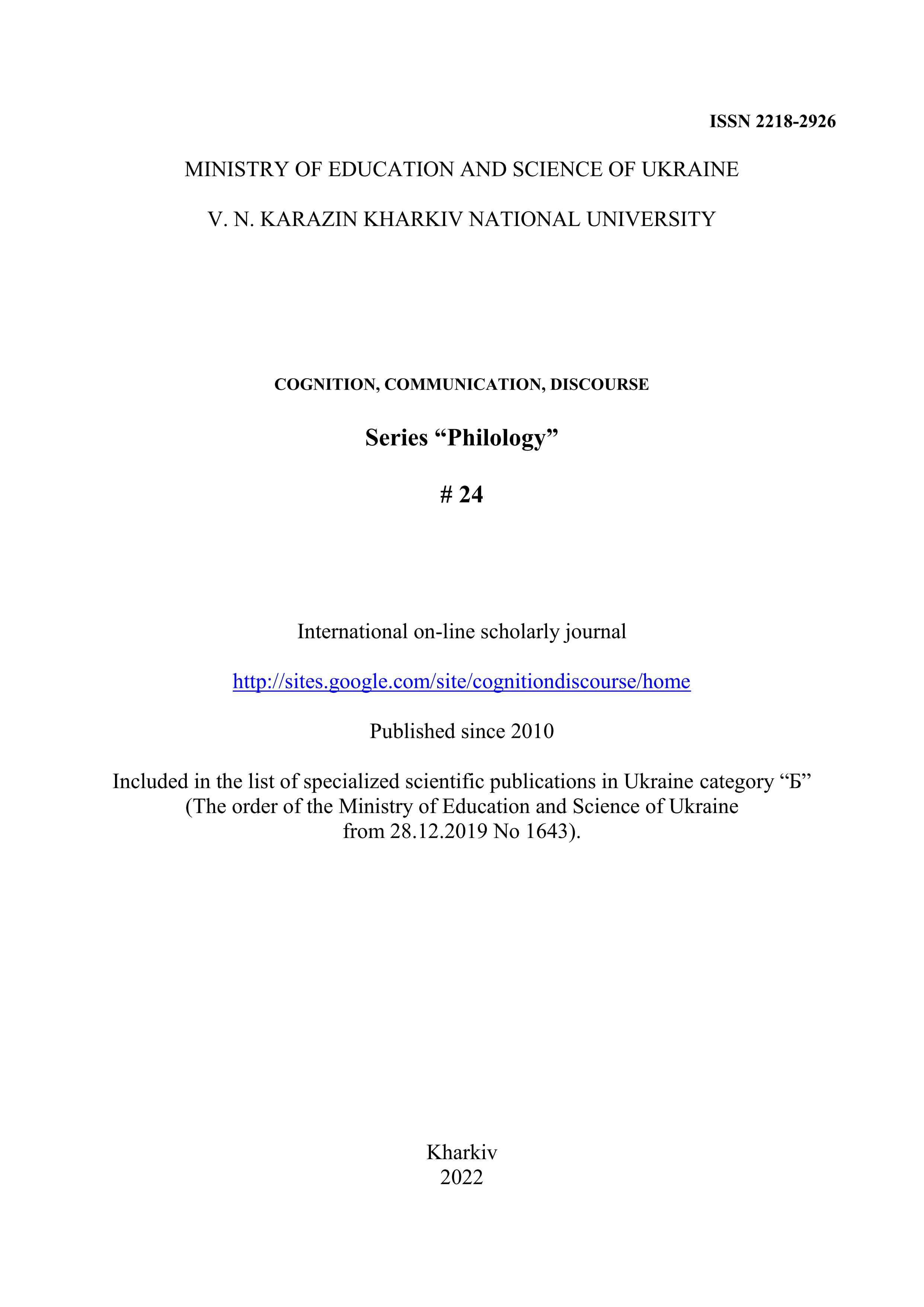Multimodality and cross-modal cohesion in manga
Abstract
Manga with their distinct style and symbolism represent a growing reading trend in the world. Manga use an established set of symbols to convey various emotions. Manga have generally been more experimental in layout than Western comics. They are more fragmentary and contain more panels that enhance the dynamism of the story. We aimed to outline methodological approaches to the analysis of manga; to summarize specific features of manga as a separate medium; to analyse how multimodal cohesion is created in manga; to reveal various types of relations between visual and verbal modes. Manga is a multimodal discourse, combining several modes, mainly visual and verbal. The aural mode is represented by linguistic and visual signs, e.g. jagged borders of a speech bubble or the size and boldness of letters. We applied methods originally designed for the film analysis to the analysis of manga, in particular, Tseng’s (2013) theory of cross-modal cohesion, based on tracking cross-modally realized characters, objects, actions, and settings. This analysis included building cross-modal cohesive chains. We argue that it is possible to track cross-modal cohesion in manga, based on the interaction of visual, verbal, and aural components of identity chains. Besides, the interaction between visual and verbal modes was revealed by analysing text-image relations. In this paper we have outlined manga-specific features, distinctive features of manga’s page layout, cinematic devices, which manga borrowed from films, some of which may be used as focalisation-marking devices.
Downloads
References
Belova, A. D. (2021). Google doodles as multimodal storytelling. Cognition, communication, discourse, 23, 13-29. http://doi.org/10.26565/2218-2926-2021-23-01
Casiello, C. (2021). Drawing sex: Pages, bodies, and sighs in Japanese eromanga. Punctum: International Journal of Semiotics, 7 (2), 97-121. https://doi.org/10.18680/hss.2021.0019
Cohn, N. (2013). Beyond speech balloons and thought bubbles: The integration of text and image, Semiotica, 197, 35-63.
Groensteen, T. (2013). Comics and narration. Jackson, MS: University Press of Mississippi.
Halliday, M.A.K., & Hasan, R. (1976). Cohesion in English. London: Longman.
Hsu, I., & Chiang, W.-Y. (2021). ‘Seeing’ music from manga: Visualizing music with embodied mechanisms of musical experience. Visual Communication. https://doi.org/10.1177/1470357220974707
Jenkins, H. (2006). Convergence culture: Where old and new media collide. New York, NY: New York University Press.
Kong, K. (2006). A taxonomy of the discourse relations between words and visual, Information Design Journal, 14(3), 207-30.
Kress, G., & van Leeuwen, T. (2006). Reading images: The grammar of visual design. London: Routeledge.
Kukkonen, K. (2013). Studying comics and graphic novels. Chichester: Wiley Blackwell.
Martinec, R., & Salway A. (2005). A system for image-text relations in new (and old) media. Visual communication, 4(3), 337-71.
McCarthy, H. (2014). A brief history of manga. London: Ilex Press.
McCloud, S. (1994). Understanding comics: The invisible art. New York, NY: HarperCollins.
Otsuru, K. (2022). The study on the relationship between the comic artists’ styles and the visual languages: From the stylistic changes in the work of Japanese comic artists. Proceedings of International conference on artificial life and robotics, 27, 1033-1035. http://doi.org/10.5954/ICAROB.2022.OS31-3
Rohan, O., Sasamoto, R., & O’Brien, S. (2021). Onomatopoeia: A relevance-based eye-tracking study of digital manga. Journal of Pragmatics, 186, 60-72. http://doi.org/10.1016/j.pragma.2021.09.018
Stöckl, H. (2009). The language-image-text—theoretical and analytical inroads into semiotic complexity. Arbeiten aus Anglistik und Amerikanistik, 34, 203-226.
Tseng, C. (2013). Cohesion in film: tracking film elements. Basingstoke: Palgrave Macmillan.
Van Leeuwen, T. (2005). Introducing Social Semiotics. London: Routledge.
Veeramuthu, S.P., & Ganapathy, M. (2022). An innovative teaching tool: Manga for KOMSAS prose comprehension. International Journal of English Language and Literature Studies, 11(1), 1-15. http://doi.org/10.18488/5019.v11i1.4390
Yefymenko, V. (2021). Interactivity and multimodal cohesion in digital fairy tales. In I. Moschini, & M. Grazia Sindoni (Eds.), Mediation and Multimodal Meaning Making in Digital Environments (pp. 118-132). New York, Abingdon: Routledge. http://doi.org/10.4324/9781003225423-7
Copyright (c) 2022 Yefymenko Victoria

This work is licensed under a Creative Commons Attribution-NonCommercial-NoDerivatives 4.0 International License.
Authors, who publish with this journal, accept the following conditions:
The authors reserve the copyright of their work and transfer to the journal the right of the first publication of this work under the terms of the Creative Commons Attribution License (CC BY), which allows other persons to freely distribute a published work with mandatory reference to the authors of the original work and the first publication of the work in this journal.
Authors have the right to enter into separate additional agreements for the non-exclusive dissemination of the work in the form in which it was published by this journal (for example, to post the work in the electronic institutions' repository or to publish as part of a monograph), provided that the link to the first publication of the work in this journal is given.
The journal policy allows and encourages the authors to place the manuscripts on the Internet (for example, in the institutions' repositories or on personal websites), both before the presentation of this manuscript to the editorial board and during review procedure, as it contributes to the creation of productive scientific discussion and positively affects the efficiency and dynamics of citing the published work (see The Effect of Open Access).




